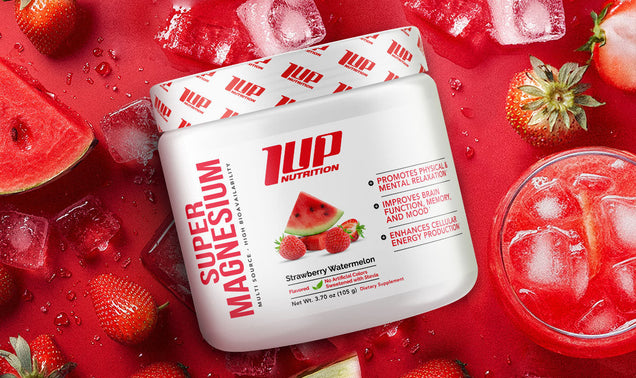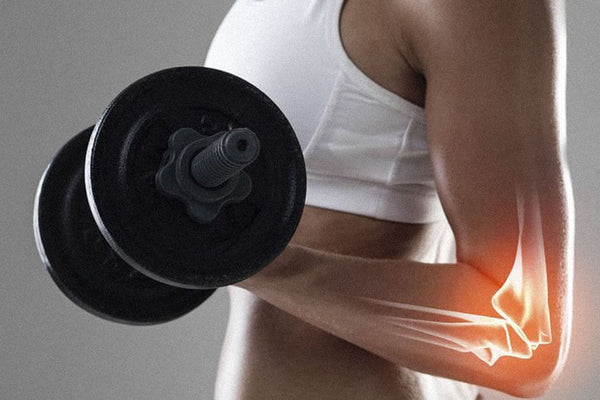Strength training (also known as resistance training or weight lifting) is synonymous with building muscle and body composition. It also serves a valuable role in fat loss and cardiometabolic health, but one of the lesser-known, yet equally important, benefits of strength training is its benefits regarding bone health, and more specifically bone mineral density (BMD).
Let’s first begin with an explanation of what bone mineral density is and why it’s important.
What is Bone Mineral Density (BMD)?
Bone mineral density is the amount of bone material in bone mass. It’s typically used as an indirect indicator of osteoporosis and fracture risk -- the lower your BMD, the higher your risk for fractures and osteoporosis.
Bone mineral density is most easily accrued, and maintained, when you’re young. As with many other facets of physiology, things get more difficult beginning around age 30, and it becomes harder to increase the density of your bones more than 1-2% per year.
In addition to age, a number of environmental factors affect bone mineral density, but research indicates that genetic factors play a large role, too.[1] In fact, research indicates that between 60-80% of bone mineral density is inherited from parents.[1]
Moreover, adults lose an average of 1% of their bone mass per year beginning around age 40.
The good news is that there are a number of lifestyle choices you can make to increase bone mass during your younger years and attenuate its decline as you transition from early adulthood to middle and late adulthood.
At the top of the list is…
Exercise for Stronger, Healthier Bones
Exercise offers a truckload of benefits. It elevates mood, boosts metabolism, builds muscle, burns belly fat, enhances sleep quality, and increases productivity. Intense exercise also builds stronger bones and combats age-related bone loss.
The best types of exercise for bone health are weight-bearing exercises, including:
- Resistance training (weight lifting, calisthenics, bodybuilding, etc.)
- Plyometrics
- Interval training
- Team sports (basketball, baseball, football, etc.)
- Dancing
- Jumping rope
If you’re not sure where to start with your exercise program, you can always log in to the 1UP Fitness App, where you’ll find customized training and nutrition tips based on your preferences, lifestyle, goals, and equipment availability.
The Best Nutrients for Bone Health
As is the case with building muscle, losing fat, and living a healthy lifestyle, nutrition also plays a key role in the health of your bones.
Primetime nutrients for strong, healthy bones are calcium and vitamin D.
Calcium Recommendations
Current recommendations for calcium are defined as:
- 1,000mg/day for adult men & women before age 50
- After age 50, it’s recommended to get 1,200mg of calcium per day for women above 50 and men above 70[2]
Foods high in calcium include:
- Milk
- Yogurt
- Cheese
- Whey protein
- Seeds
- Beans
- Lentils
- Leafy greens
To further supplement your calcium intake, you can also use a daily multivitamin, such as 1UP Multi-Go Women or Multi-Go Men.
Vitamin D Recommendations
In addition to being an essential vitamin, vitamin D also serves an important role in mood, immune function, and hormone production. Our bodies naturally synthesize vitamin D when our skin is exposed to direct sunlight. However, modern living as well as the location where you reside can affect your body’s ability to generate sufficient amounts of vitamin D.
Recommended daily vitamin D intakes for adult are:
- 600IUs per day for adults 19 to 70
- 800IUs per day for adults aged 71+
The most efficient way to get vitamin D is to spend time outdoors; but, if that’s not always feasible, you can get vitamin D from certain foods, including:
- Salmon
- Sardines
- Mushrooms
- Fortified dairy products and cereals
- Beef liver
- Egg yolks
You can also use supplements that contain vitamin D3 (cholecalciferol, the “active” form of vitamin D that’s more bioavailable and effective). Our men’s and women’s multivitamins supply 100% of the Daily Value (DV) of vitamin D3 (as cholecalciferol) as does our female-focused Hormone Support Plus.
Don’t Neglect Protein
There was a common misconception that high-protein diets could lead to bone loss, but numerous studies have obliterated these misunderstandings and shown that, if anything, higher protein diets support bone health and protect against bone loss.[3,4]
So, make sure to consume enough protein each day, including whole foods and/or protein supplements. This is especially important for women, who are less likely to consume high-protein diets and are more prone to osteoporosis than men.
Other Factors
Other lifestyle factors to limit or eliminate are drinking alcohol and smoking. The reasons for this are:
- Excessive drinking can damage your bones and increase the risk of falling/breaking a bone
- Individuals who smoke are known to have weaker bones. Furthermore, post-menopausal women who smoke have a higher chance of bone breaks
Takeaway
Bone health isn’t something to just worry about when you get older -- it begins when we’re young and should continue throughout our lives. Regular (weight-bearing) exercise, proper diet, and healthy lifestyle choices all factor into strong, healthy bones. With this combination you’ll live a long, healthy and fit life!
References
- Munro Peacock, Charles H. Turner, Michael J. Econs, Tatiana Foroud, Genetics of Osteoporosis, Endocrine Reviews, Volume 23, Issue 3, 1 June 2002, Pages 303–326, https://doi.org/10.1210/edrv.23.3.0464
- https://www.bones.nih.gov/health-info/bone/bone-health/nutrition/calcium-and-vitamin-d-important-every-age
- Rizzoli, R., Biver, E., Bonjour, JP. et al. Benefits and safety of dietary protein for bone health—an expert consensus paper endorsed by the European Society for Clinical and Economical Aspects of Osteopororosis, Osteoarthritis, and Musculoskeletal Diseases and by the International Osteoporosis Foundation. Osteoporos Int (2018) 29: 1933. https://doi.org/10.1007/s00198-018-4534-5
- Phillips, S. M., Chevalier, S., & Leidy, H. J. (2016). Protein “requirements” beyond the RDA: Implications for optimizing health 1. Applied Physiology, Nutrition, and Metabolism, 41(999), 1-8. http://dx.doi.org/10.1139/apnm-2015-0550






